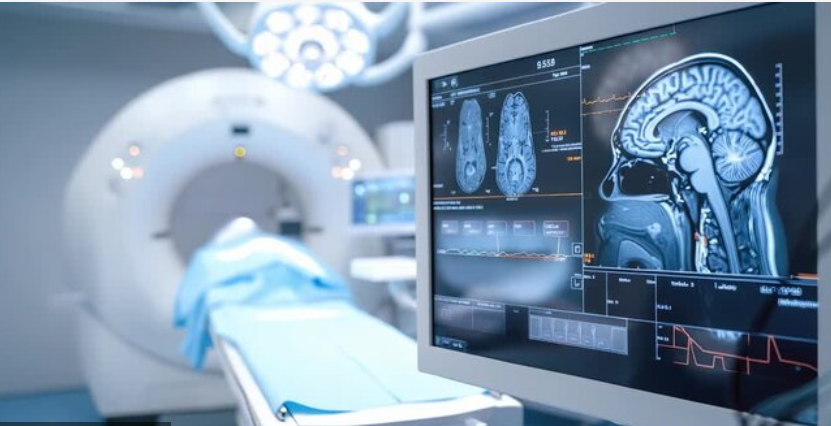Magnetic Resonance Imaging (MRI) has become a vital tool in modern healthcare, not only for its diagnostic precision but also for its growing role in evidence-based medicine (EBM). Evidence-based medicine emphasizes clinical decisions grounded in the best available research, patient preferences, and measurable outcomes. MRI’s detailed imaging capabilities provide clinicians with reliable data to inform treatment, monitor disease progression, and evaluate therapy effectiveness, making it central to the evolution of EBM.
As MRI technology advances—with AI-enhanced imaging, functional MRI, and quantitative analysis—it is increasingly shaping how medical evidence is gathered, interpreted, and applied in clinical practice.
1. MRI as a Source of High-Quality Clinical Evidence
Precision and Objectivity in Diagnostics
MRI offers unparalleled soft tissue contrast, functional assessment, and multi-planar imaging, enabling:
- Accurate disease staging
- Early detection of pathology
- Non-invasive monitoring of treatment response
This precision allows clinicians to rely on objective imaging biomarkers as evidence when making diagnostic and therapeutic decisions. Unlike subjective assessments or low-resolution imaging, MRI provides quantifiable and reproducible data, strengthening the foundation of evidence-based practice.
2. Functional and Quantitative MRI: Measuring What Matters
Beyond Anatomy: Understanding Physiology and Function
Traditional imaging captures structure, but modern MRI techniques go further:
- Functional MRI (fMRI) maps brain activity and neural connectivity
- Diffusion tensor imaging (DTI) tracks nerve pathways and tissue integrity
- Quantitative MRI (qMRI) measures tissue composition, perfusion, and metabolic changes
By translating imaging into measurable parameters, MRI enables clinicians to track disease progression, assess treatment efficacy, and generate evidence that supports personalized, outcome-driven care.
3. AI and Big Data: Accelerating Evidence Generation
From Images to Actionable Insights
Artificial intelligence is transforming MRI into a powerful engine for evidence-based medicine. AI algorithms can:
- Enhance image clarity and reduce acquisition time
- Detect subtle anomalies invisible to human interpretation
- Aggregate imaging data across populations to identify trends and prognostic markers
The combination of AI and large datasets allows hospitals and researchers to generate robust clinical evidence faster, informing treatment guidelines and policy decisions with high confidence.
4. Supporting Personalized and Value-Based Care
Aligning Evidence with Individualized Treatment
Value-based medicine relies on interventions that improve outcomes efficiently. MRI supports this model by providing:
- Tailored diagnostic information for precise treatment planning
- Objective monitoring of therapeutic response, reducing unnecessary interventions
- Data-driven decisions that optimize patient safety and resource allocation
Evidence generated through MRI ensures that care is both effective and cost-efficient, reinforcing its centrality in modern healthcare strategies.
5. MRI in Clinical Trials and Research
Driving Evidence-Based Guidelines
MRI is increasingly used in clinical research to evaluate drug efficacy, surgical outcomes, and non-pharmacological therapies. Its advantages include:
- Non-invasive longitudinal monitoring of patients
- High reproducibility, ensuring consistent results across studies
- Detailed tissue characterization, allowing early detection of subtle treatment effects
This rich evidence informs clinical guidelines, best practice recommendations, and regulatory approvals, advancing the field of medicine through rigorous data.
6. Enhancing Decision-Making and Reducing Uncertainty
Evidence That Informs Confidence
Medical decisions often involve uncertainty, particularly for complex or ambiguous cases. MRI reduces uncertainty by:
- Providing clear anatomical and functional insights
- Detecting early signs of complications or treatment failure
- Guiding clinicians in making informed, timely decisions
Incorporating MRI findings into decision-making strengthens evidence-based protocols and enhances patient outcomes.
7. Global Implications for Healthcare Policy
Standardizing Evidence Across Populations
MRI-driven evidence is influencing health policy at both national and international levels. Policymakers can use aggregated MRI data to:
- Develop screening and prevention programs
- Allocate resources efficiently based on population health trends
- Standardize care pathways and reduce variability in treatment
By integrating MRI into public health strategies, evidence-based medicine can be scaled to benefit entire populations, not just individual patients.
8. Challenges and Considerations
Ensuring Quality, Accessibility, and Equity
Despite its potential, leveraging MRI for evidence-based medicine faces challenges:
- High costs and infrastructure requirements limit accessibility in low-resource settings
- Data management and standardization are critical for multi-center research
- Workforce training is essential for accurate image interpretation and application
Addressing these challenges through policy, education, and technological innovation ensures that MRI remains a reliable pillar of evidence-based care worldwide.
Conclusion: MRI as the Backbone of Modern EBM
MRI is reshaping the practice of medicine by providing high-quality, reproducible evidence that informs diagnosis, treatment, and policy. Its role in functional and quantitative imaging, AI integration, and clinical research underscores its value in personalized, outcome-driven, and population-level healthcare.
As the technology continues to evolve, MRI will remain central to evidence-based medicine, enabling clinicians, researchers, and policymakers to deliver smarter, more effective, and patient-centered care for years to come.
Also Read :
- Medical Education and MRI: Training the Doctors of Tomorrow
- How MRI is Driving Value-Based Medical Treatment
- Shaping Healthcare Policy Through MRI Advancements
